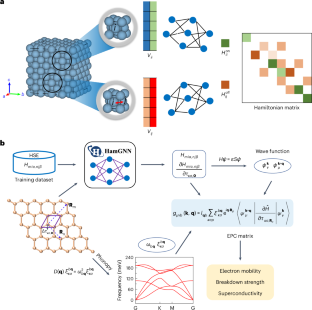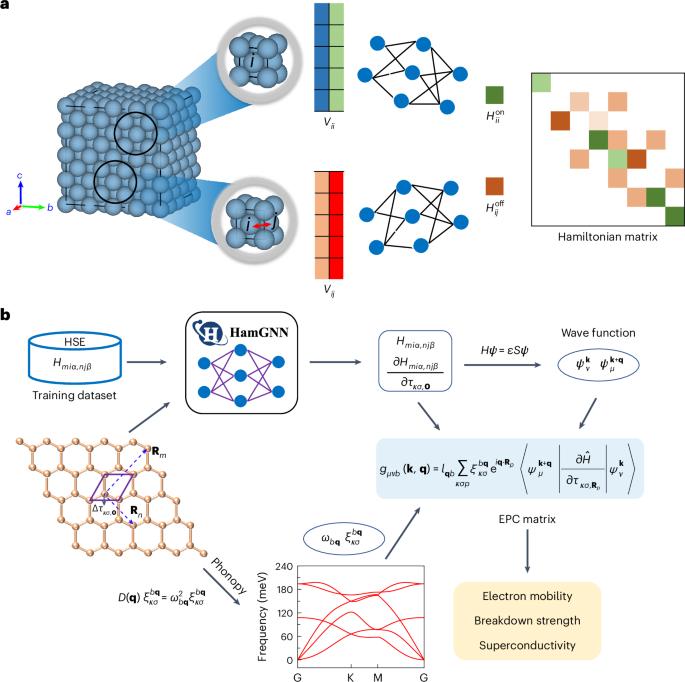Accelerating the calculation of electron–phonon coupling strength with machine learning
IF 12
Q1 COMPUTER SCIENCE, INTERDISCIPLINARY APPLICATIONS
引用次数: 0
Abstract
The calculation of electron–phonon couplings (EPCs) is essential for understanding various fundamental physical properties, including electrical transport, optical and superconducting behaviors in materials. However, obtaining EPCs through fully first-principles methods is notably challenging, particularly for large systems or when employing advanced functionals. Here we introduce a machine learning framework to accelerate EPC calculations by utilizing atomic orbital-based Hamiltonian matrices and gradients predicted by an equivariant graph neural network. We demonstrate that our method not only yields EPC values in close agreement with first-principles results but also enhances calculation efficiency by several orders of magnitude. Application to GaAs using the Heyd–Scuseria–Ernzerhof functional reveals the necessity of advanced functionals for accurate carrier mobility predictions, while for the large Kagome crystal CsV3Sb5, our framework reproduces the experimentally observed double domes in pressure-induced superconducting phase diagrams. This machine learning framework offers a powerful and efficient tool for the investigation of diverse EPC-related phenomena in complex materials. A machine learning framework is proposed to accurately predict electron–phonon coupling (EPC) strengths while reducing computational costs compared with first-principles methods. This approach facilitates EPC calculations with advanced functionals, allowing the accurate determination of real-world material properties such as carrier mobility and superconductivity.


利用机器学习加速电子-声子耦合强度的计算。
计算电子-声子耦合(EPCs)对于理解各种基本物理特性,包括材料中的电传输、光学和超导行为至关重要。然而,通过完全第一性原理方法获得 EPCs 具有明显的挑战性,尤其是对于大型系统或采用高级函数时。在这里,我们引入了一种机器学习框架,利用基于原子轨道的哈密顿矩阵和等变图神经网络预测的梯度来加速 EPC 计算。我们证明,我们的方法不仅能得到与第一原理结果接近的 EPC 值,还能将计算效率提高几个数量级。使用海德-斯库瑟里亚-恩泽霍夫(Heyd-Scuseria-Ernzerhof)函数对砷化镓的应用揭示了高级函数对准确预测载流子迁移率的必要性,而对于大型卡戈米晶体 CsV3Sb5,我们的框架再现了实验观察到的压力诱导超导相图中的双圆顶。这一机器学习框架为研究复杂材料中与 EPC 相关的各种现象提供了强大而高效的工具。
本文章由计算机程序翻译,如有差异,请以英文原文为准。
求助全文
约1分钟内获得全文
求助全文

 求助内容:
求助内容: 应助结果提醒方式:
应助结果提醒方式:


